🎯 Why an Adapted Methodology?
Traditional education, often centered on uniform standards and generalized evaluation criteria, does not deeply address the neurological, sensory, and communicative differences present in children with Autism Spectrum Disorder (ASD). This unified approach can leave out a large number of students who process the world differently. An adapted methodology is not a concession or a simplified version of teaching, but rather a pedagogical strategy centered on diversity. It is a way of understanding that every brain is unique and deserves a teaching method that respects its particularities.
Adapting a methodology means changing the perspective on what learning is and how it is achieved. It's not about lowering expectations, but redefining the paths to knowledge. The goal is not for everyone to arrive at the same place by the same path, but for each one to have a real opportunity to move forward, grow, and build autonomy. Teaching from an inclusive perspective means recognizing that the environment, tools, and strategies must be transformed to guarantee equity, not equality.
In the case of ASD, this translates into concrete practices: visual communication, stable routines, anticipation, organized environments, using specific interests as bridges, and above all, a respectful and flexible attitude from adults. To adapt is not to exclude, it is to include with meaning, purpose, and hope. It means teaching with empathy, active listening, and creativity. It means transforming education into a space where each child can find their place, their time, and their way of learning.
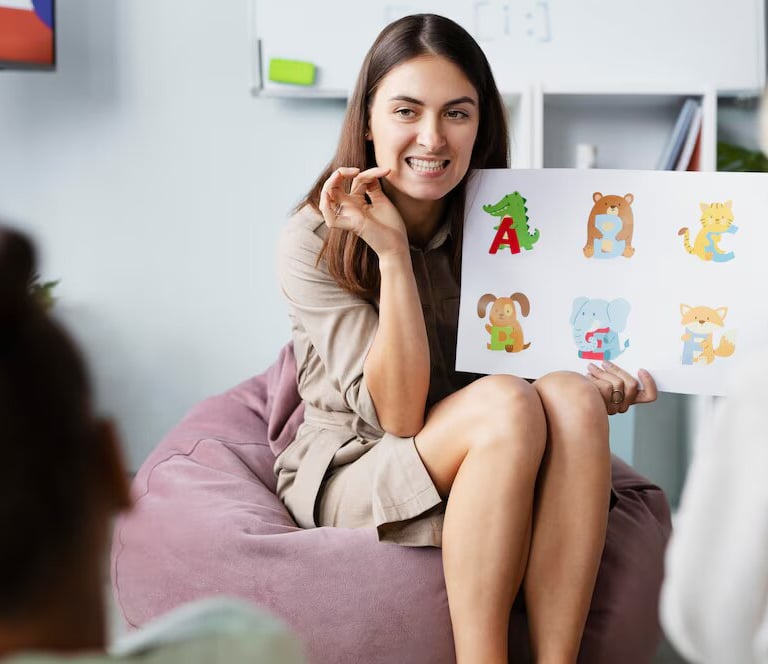

🧩 Learning Through Small Steps
Many children on the autism spectrum face difficulties in processing multiple stimuli at once, organizing complex sequences, or generalizing learning across contexts. Instead of receiving information globally, their learning style requires segmenting, structuring, and building from the concrete to the abstract. Learning through small steps, also known as "chaining" or "task analysis," is a strategy that allows teaching from the accessible and progressing toward more complex skills.
This approach starts by selecting a specific skill to work on, such as dressing independently, brushing teeth, or greeting appropriately. Then, that skill is broken down into micro-steps, each of which is taught clearly, with visual, verbal, or physical support, and with plenty of repetition. Each step is positively reinforced, and progression only happens once the previous step is consolidated. This methodology, in addition to being effective, is deeply respectful, as it starts from what the child can do and not what is missing.
Working with small steps requires patience, careful observation, and valuing each achievement as a giant step. It's not just about teaching functional skills, but about strengthening the child’s confidence, self-esteem, and sense of competence. When a child accomplishes something on their own, even if it's small, their perspective changes. They feel capable. And that, in education, is one of the most powerful engines of learning.


🗂️ Differentiated Learning Zones
The physical environment as an educational ally. The physical space where a child learns has a direct impact on their behavior, attention, and emotional state. An overstimulated environment with bright lights, constant noise, or harsh colors can provoke anxiety, dysregulation, or disengagement. On the other hand, an environment organized by zones, with accessible materials and a friendly aesthetic, helps the child know what to do, where to do it, and how.
Designing an environment with differentiated zones supports spatial understanding and self-regulation. Each zone has a clear purpose and function, allowing the child to associate space with activity. Zones help establish implicit routines, define time, facilitate transitions, and promote independence. A well-distributed environment silently supports learning and provides security.
📌 Recommended basic zones: 🧘♂️ Emotional regulation zone: with mats, cushions, soft lighting, sensory toys, soft books, and deep pressure items. This space functions as a safe corner where the child can calm down, reorganize emotionally, and reconnect with their environment without feeling overwhelmed or judged.
📚 Learning zone: a clear table, organized materials, visual supports, pictograms, calendars, concrete items for academic work. This space should be predictable, clear, and distraction-free to support cognitive focus.
🎨 Free play zone: building toys, blocks, playdough, role-play items, sensory exploration objects. This space encourages expression, creativity, imitation, cooperation, and spontaneous social skill development.
🎓 Tips: In home environments, you can use different colored rugs to differentiate zones. In classrooms, it's very useful to hang pictogram signs indicating the purpose of each space: "we read here," "we rest here," "we play here." It's also essential to respect pause times. Calm also educates. Not everything is measured in academic content: children also learn to breathe, to observe, to wait. The environment doesn’t just contain—it communicates, structures, and supports.
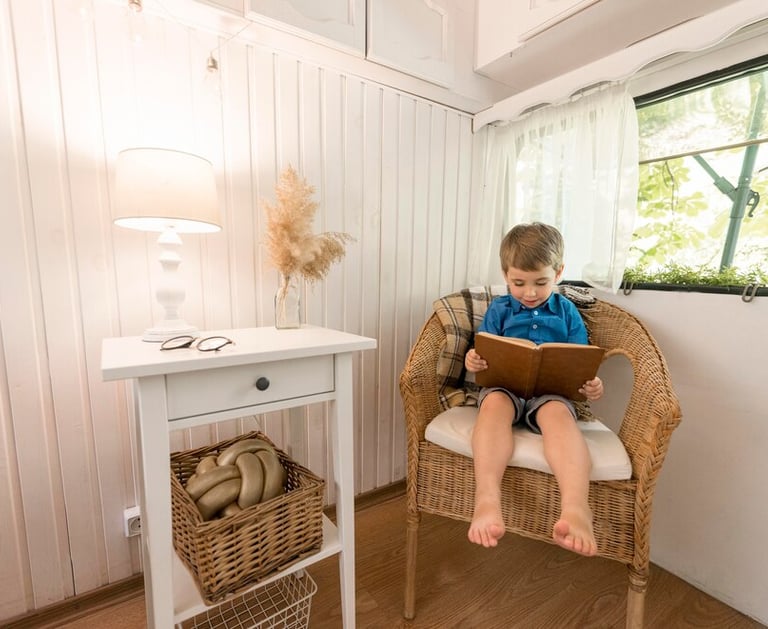

⏰ Visual Organization and Anticipation
Many children with ASD struggle to understand the passage of time, sudden changes, or abstract verbal instructions. This can lead to confusion, anxiety, or unexpected behaviors. That’s why the use of visual tools such as visual schedules, anticipation boards, transition cards, or pictograms is essential for building security and promoting autonomy.
These tools allow children to visualize what is going to happen, when, and how. By graphically representing the schedule, activities, and transitions, children receive a comprehensible map of the day. This not only improves understanding of their environment, but also helps them mentally and emotionally prepare for what’s to come, reducing stress levels.
Visual anticipation also supports language development, internal organization, instruction-following, and executive planning. When the environment is understandable, the child can focus more on learning and less on decoding what’s happening. Images act as bridges between the internal and external world, helping the child feel more competent and connected.
🎓 Useful tools examples:
Schedules with pictograms that show the order of the day’s activities.
Visual clocks or colored timers to represent waiting or task durations.
"Now/next" or "first/then" cards to prepare for transitions.
Choice boards with images to allow the child to participate in decision-making.
The impact of visual organization is profound: it reduces meltdowns, improves task transitions, supports communication, and promotes active participation. Anticipating is not overprotecting—it is empowering.
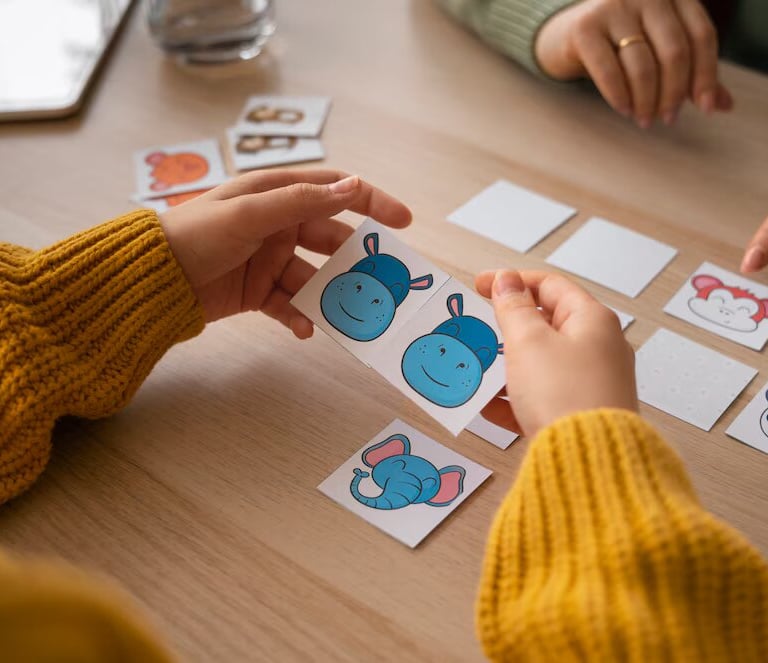

🎨 Learning Through Play: Play as a Bridge
Play is the natural language of childhood. It is the channel through which children explore, discover, imitate, express emotions, and build knowledge. In children with ASD, play may present particular challenges, especially in symbolic, social, or spontaneous dimensions. However, far from being a definitive difficulty, this represents an opportunity to support them with a respectful, creative, and committed approach.
Structured, guided, and adapted play can be a powerful educational tool. Through play, you can teach turn-taking, eye contact, emotional expression, functional communication, understanding rules, problem-solving, language, and motor skills. The key is to start with what the child already does—even if it’s lining up toys or spinning objects—and gradually expand their repertoire without forcing or interrupting their internal logic.
The most effective games are often those that combine personal interest with opportunities for interaction. For example, if a child loves cars, you can tell stories with them, classify them by color, use them for "stop/go" games, or run turn-taking races. If they love animals, you can use puppets, dramatizations, or sound games. The important thing is to enter their world and then invite them into ours. Play is not a reward—it is a legitimate path to learning, connection, and emotional bonding.
📌 Recommended games:
Shape sorters, puzzles, classifications: encourage coordination, logical thinking, and sustained attention.
Turn-taking games: teach waiting, respecting others, anticipating, observing, and sharing.
Guided symbolic play: use dolls, costumes, or play scenes to foster imagination, communication, and emotional expression.
🎓 Recommendations: Start from the child’s current level of play. If they only line up toys, join them in that and gradually introduce variations. It’s not about imposing a way of playing, but respectfully and creatively expanding it. Turn learning into play: count with blocks, learn colors with playdough, teach emotions with puppets. Play teaches more than content—it teaches how to relate, imagine, and enjoy learning.
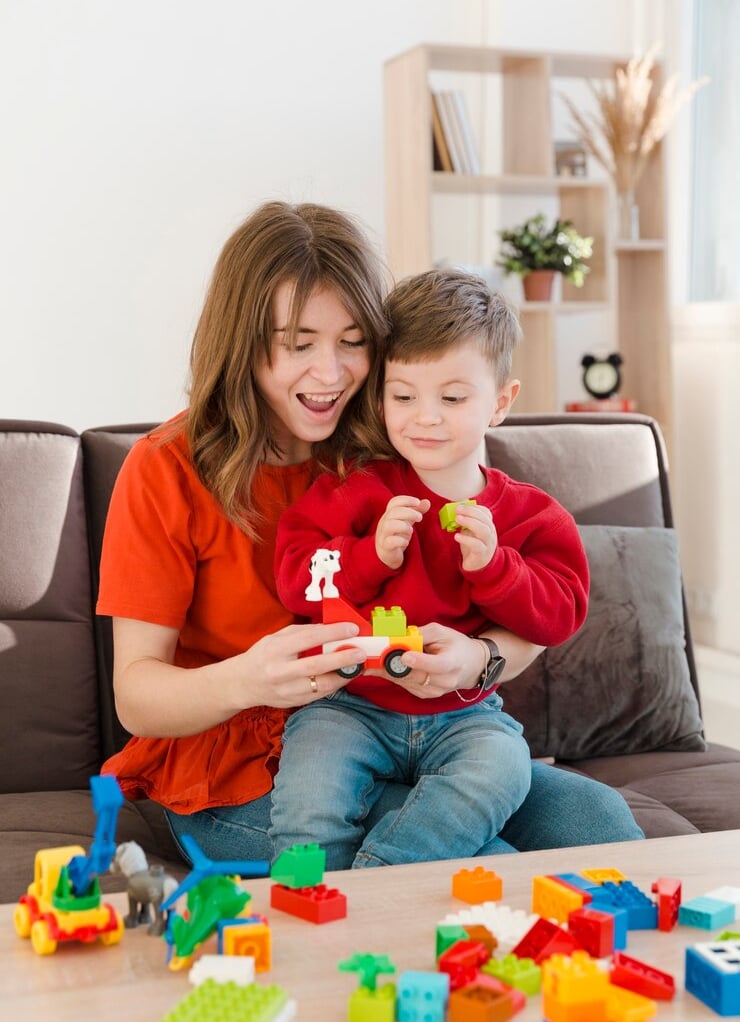

🧠 Adapt Without Underestimating
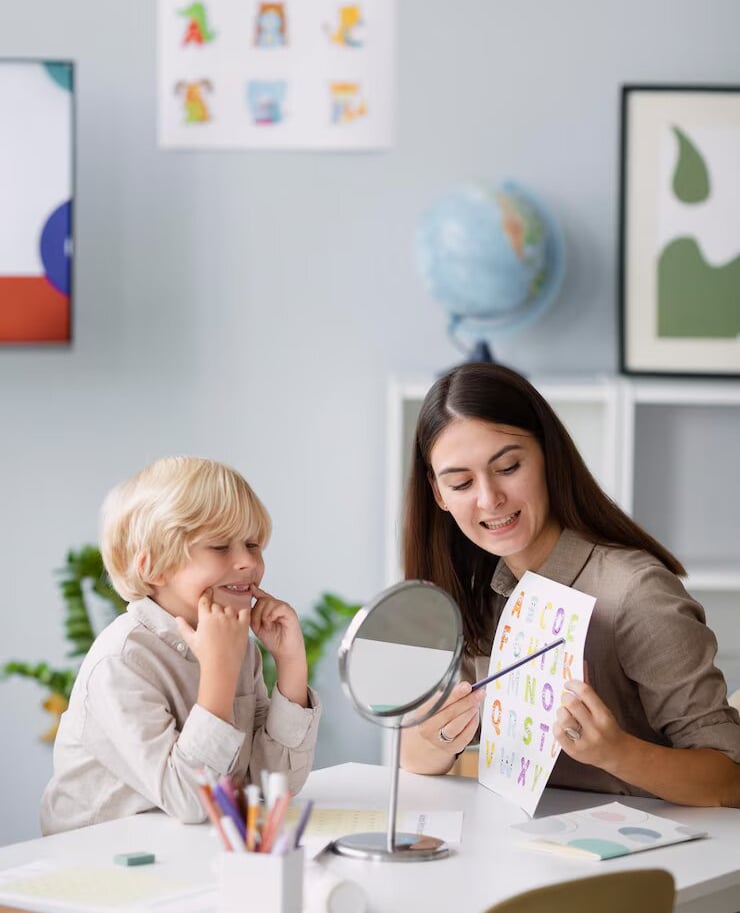

One of the most common mistakes when working with children with autism is confusing adaptation with excessive simplification. Often, out of a desire to protect, we end up underestimating. But adapting is not reducing: it’s about creating different access routes to the same learning. It starts with respect for diversity without putting limits on what the child can achieve. Children with ASD, with appropriate supports, can develop surprising skills, solve problems creatively, and connect deeply with knowledge.
📌 Keys to adapting with respect: Let’s avoid expressions like “they don’t understand,” “it’s too hard,” or “they won’t be able to do that.” Let’s change our language: say “they haven’t mastered it yet,” “let’s find another way,” or “let’s try from a different angle.” This shift in perspective transforms the educational relationship. Using alternative communication resources (PECS boards, signs, drawings) is not giving up on demands, it is opening new pathways. Each child has their own way of expressing and processing, and adults must be prepared to translate content into that language.
Also, recognizing that not all learning is academic is fundamental. Teaching how to ask for help, tolerate waiting, communicate a need, or identify an emotion are achievements just as valuable as reading or math skills. Personal and emotional development is an integral part of the educational process.
🎓 Real example: 👉 A non-verbal child can learn to read using pictograms and associating images with written words. A girl with frequent crises can use emoji cards to express how she feels and prevent dysregulation. In both cases, learning is not abandoned but the access channel is adapted. This is true inclusion: one that respects, challenges, and trusts.
🧠 Teach Through Structure, Not Control
For years, education has been strongly influenced by behaviorist models that believe learning happens through rewards or punishments. While some children may respond to this approach, many children with ASD don’t learn from rewards or fear punishments; rather, they need to understand the world around them to feel safe and interact with it. Structure is not a control mechanism but a way to offer predictability, stability, and emotional containment. It is their invisible language, the way chaos is translated into order.
Structure here means clear organization of time, space, activities, and expectations. When the environment is structured, rules are consistent, and the adult is predictable and kind, the autistic child can relax, feel safe, and be ready to learn. It’s teaching without imposing, guiding without forcing, supporting without overwhelming. It is not about controlling behavior but providing the supports needed so they can choose, participate, and enjoy the educational process.
Control, on the other hand, can cause resistance, anxiety, or withdrawal. Forcing behavior without addressing underlying causes often results in emotional disconnection. Teaching through structure means acting with respect, recognizing the child needs to know what, how, and why to do something. Structure is not rigidity: it is flexible containment. It is a map that organizes environment, relationships, and time accessibly.
📌 How to teach through structure?
Establish stable routines with visual schedules, pictograms, or sequences the child can anticipate and follow.
Give instructions clearly, concretely, and positively. Instead of “don’t do that,” say “here we do this.”
Prepare changes in advance. If there is an outing or routine change, notify with time, using visual supports.
Respect the child’s pace. If they need more time to transition, accompany without rushing or pressuring.
Maintain a predictable adult attitude: calm voice tone, clear body language, consistency between words and actions.
🎓 Real example:
👉 In an inclusive classroom, each activity has a defined space, estimated duration, and visual presentation. The teacher doesn’t impose but accompanies: points to the next step with images, shows expected behavior with gestures, validates emerging emotions. When a child is frustrated because they don’t want to stop playing to move to another activity, a pictogram showing “now” and “later” is shown, a short transition time is offered, and the child is emotionally supported during the process. The child doesn’t feel forced but accompanied.
🎓 Final reflection:
Teaching through structure means recognizing that learning is built on security, not fear. It means leaving behind rigid control methods and moving toward education that respects each child’s uniqueness. Structure is not the enemy of creativity or spontaneity: on the contrary, it allows them to emerge more naturally because the child feels contained. Teaching through structure is, ultimately, trusting that with the right supports, all children can learn.
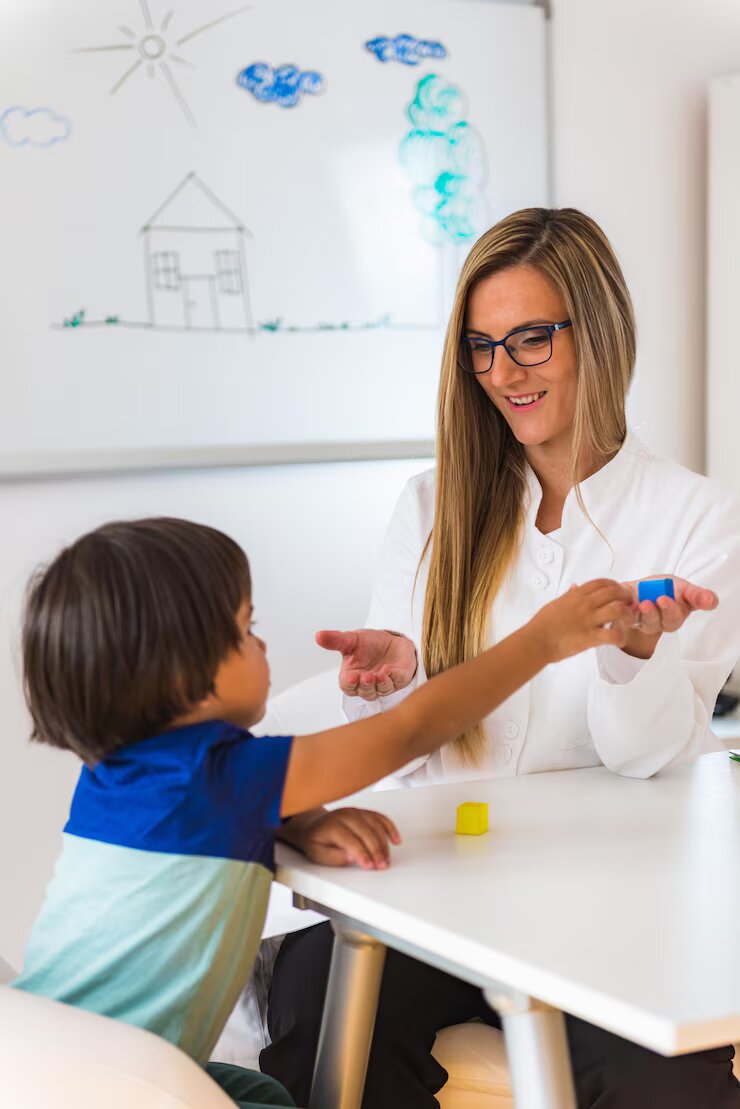

🧩 The Environment as a Second Teacher
In inclusive pedagogy, the environment is not just a passive backdrop or space where activities occur but becomes an active educational agent, a “second teacher” that guides, organizes, calms, and communicates. For children with ASD, the environment can be a powerful tool or a difficult obstacle. Hence the importance of carefully thinking about how it is organized, what it communicates, what it allows, and what it limits.
A well-designed environment speaks for itself: it indicates where to play, learn, and rest. It doesn’t require many words to be understood because it appeals to visual, sensory, and spatial language. This is essential for children on the autism spectrum, who often interpret the world more concretely than symbolically. A structured and friendly environment helps anticipate, understand, and self-regulate. Conversely, a chaotic, overstimulating, unorganized, or overloaded environment can cause anxiety, dysregulation, or even challenging behaviors.
The environment also communicates expectations: if the classroom is organized with defined spaces, accessible materials, and clear signs, children know what to do, how, and when. This setup promotes autonomy, participation, and self-organization. It also avoids constant verbal commands, which can be invasive for many children with auditory hypersensitivity or slow language processing.
🧩 What makes the environment a teacher?
Visual clarity: Spaces defined with rugs, pictogram or photo signs, low and accessible furniture, clear zone and material labels.
Sensory accessibility: Avoid very bright lights, loud noises, cluttered walls, or hard-to-handle materials. Include pleasant textures, warm lighting, and calm zones.
Functional flexibility: Spaces adaptable to different needs. A corner can be for reading, relaxation, or symbolic play depending on the pedagogical intent and time of day.
Order and predictability: Everything has a place and purpose. Materials are logically arranged, within the child’s reach, with options but no overload.
🎓 Real example:
👉 In an inclusive early childhood classroom, space is organized into clear zones: a language corner with books and poufs, a sensory area with texture boxes, a symbolic play area with toy kitchens and costumes, and a rest zone with mats. Each has a sign with images and words indicating its function. Children move freely but with silent guidance: the environment tells them what to expect and how to behave. This reduces stress, encourages autonomous exploration, and improves emotional self-regulation.
📌 Suggestions for home or school:
Use low, open shelves so children see what is available and can choose.
Show with images what is done in each space (e.g., “here we read,” “here we play,” “here we rest”).
Limit excessive decoration and unnecessary objects: less is more. Visual overload can overwhelm.
Include emotional regulation zones with items like sensory balls, weighted blankets, soft lights, or calming music.
Incorporate materials that invite active exploration: blocks, sorting boxes, cause-and-effect games.
🎓 Final reflection:
When we think of the environment as a second teacher, we stop seeing it as a neutral background and start designing it as part of the educational project. We understand the space can educate, accompany, contain, and organize without words. For children with ASD, this environment can mean the difference between feeling lost or feeling at home. An environment that teaches is, ultimately, an environment that cares.
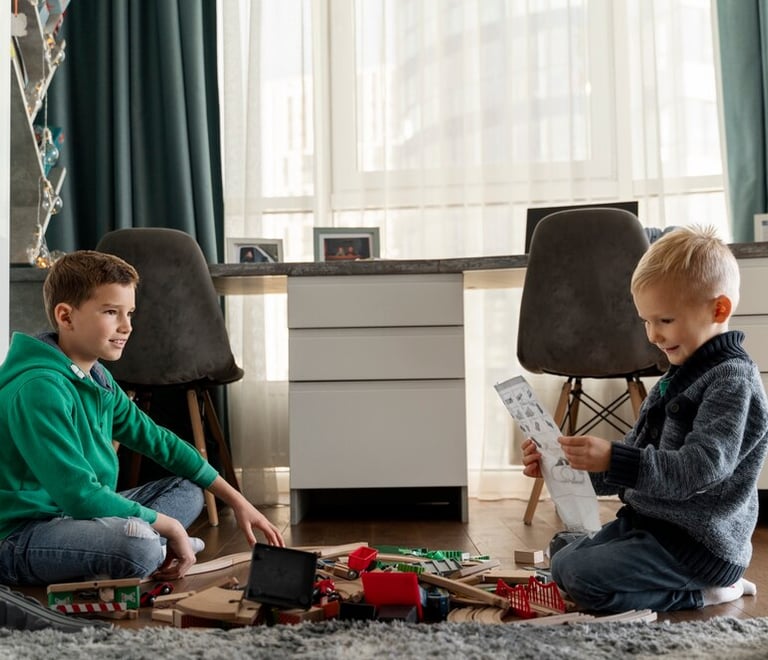

🧱 Step-by-step Learning: Building Brick by Brick
In educating children with ASD, learning is not a sprint but a patient construction, brick by brick. The idea of step-by-step learning stems from a fundamental truth: all complex skills are made of multiple micro-skills that must be taught, modeled, and practiced gradually. It is not about simplifying content but making it accessible, understandable, and transferable to daily contexts.
This approach allows supporting each child’s unique pace, respecting how they think, process, perceive, and connect. Many children on the spectrum face challenges in generalizing learning, understanding long instructions, or sequencing actions. Therefore, framing each new learning as a logical, concrete, and predictable sequence not only improves comprehension but promotes genuine autonomy.
This type of teaching is based on the task analysis model, where an action like “brushing teeth” or “greeting” is divided into small, clear, achievable steps. Each step is taught with visual, gestural, or physical supports (if needed) until the child fluently incorporates it. Each small success fits like a piece and allows moving forward toward the full skill.
🧩 How is step-by-step learning applied?
Select the target skill: Define a functional or academic skill important for the child’s autonomy (e.g., dressing, asking for help, following instructions).
Breakdown of steps: Divide the skill into smaller, manageable parts. Each step must be concrete, visible, and teachable.
Systematic teaching: Teach each step separately with repetition, modeling, positive reinforcement, and supports (verbal, physical, or visual) that are gradually faded.
Chaining: Once each step is learned, start linking them to form the complete sequence.
Generalization: Help the child apply the skill in different contexts, with different people and materials.
🎓 Real example:
👉 Teaching the skill of “putting on a jacket” might seem simple but includes several steps: taking the jacket, locating the sleeves, inserting one arm, then the other, pulling up the zipper, adjusting the garment. Each step can be taught with a corresponding pictogram or photo, practiced calmly, reinforced on each attempt, and celebrated on each success. Over time, with constant repetition, the child acquires not only the full skill but also self-confidence and a sense of achievement.
🧠 Benefits of the step-by-step approach:
Reduces frustration: goals are clear and achievable, avoiding over-demanding.
Increases motivation: each small success is a visible step toward a bigger goal.
Promotes autonomy: by understanding the “how” of each action, the child begins to own their routines.
Improves self-esteem: frequent success, even small, generates emotional security.
📌 Suggestions to apply at home or school:
Use sequenced visual supports (comic-style or pictograms) to show activity steps.
Record short model videos with adults or children performing the sequence and show them before practice.
Celebrate each progress with specific praise: “You managed to put your arm in the sleeve!” instead of a generic “Good job!”
Don’t rush the process: some children need more time to consolidate one step before moving to the next.
🎓 Final reflection:
Teaching step by step is not going slower; it is going deeper. It is understanding that each well-placed brick builds a firm foundation for the child to grow, explore, and connect with the world from their own place. Step-by-step learning respects processes, honors differences, and plants real autonomy. Because at the end of the day, it’s not just about the child learning to do something but about them feeling capable of doing it.
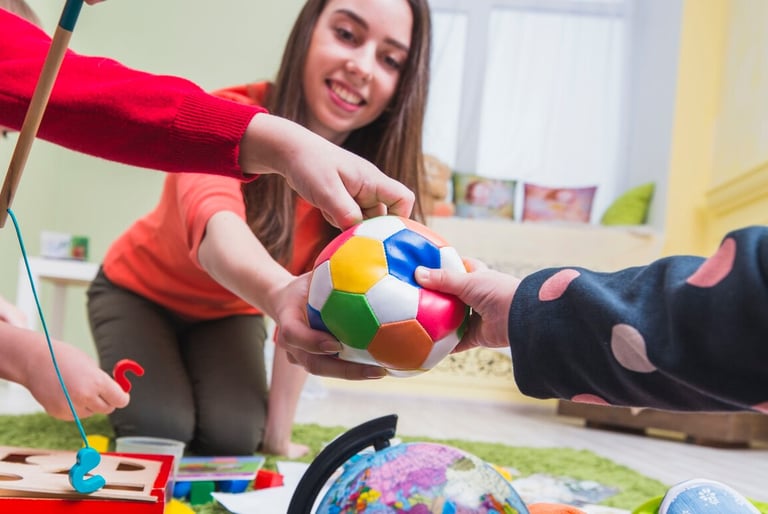

🧭 Teaching is not just transmitting—it's translating
In the act of teaching, especially when working with children with Autism Spectrum Disorder (ASD), it’s essential to understand that it’s not enough to simply deliver information or content. Teaching involves a much more complex and delicate process: translating that information so it becomes accessible, meaningful, and relevant for each child, taking into account their neurological, sensory, and communication particularities.
🧩 What does "translating" mean in education?
Translating means transforming knowledge so that it can be understood and processed through the way each child perceives and relates to the world. It’s not just a matter of changing words or simplifying content, but a deep adaptation of the message, the materials, and the strategies so they fit the student’s learning style and abilities.
📌 Key aspects of this translation:
Adapted language: Use clear, direct vocabulary, ideally supported by visual elements (pictograms, images, videos) to aid understanding.
Appropriate pace: Respect the time each child needs to process information, avoid overload, and offer breaks to help internalize learning.
Contextualization: Relate content to the child’s experiences, interests, and concrete realities to give it meaning and relevance.
Structural clarity: Organize information into steps, sequences, or digestible chunks, avoiding cognitive overload.
🎯 Practical example:
👉 If teaching a child with ASD to wash their hands, it’s not enough to say “Wash your hands.” You need to break down the instruction into concrete steps, show images or videos of each action, provide a model to imitate, and use visual cues or timers to anticipate how long each step should take. In this way, the message is “translated” into a format the child can understand and act upon.
🧠 Teaching as an act of empathy
Educational translation also means putting yourself in the child’s shoes, understanding from their perspective, and adjusting your expectations and methods accordingly. Not all children have the same starting point or the same pathways to learning. This empathetic approach transforms teaching into an inclusive and respectful experience.
📌 Benefits of teaching through translation:
Greater understanding: children better grasp what is expected and how to achieve it.
Less anxiety: clarity and predictability reduce uncertainty and frustration.
Increased autonomy: children gain tools to act independently, reducing reliance on adults.
Improved motivation: when content makes sense and is accessible, interest and engagement increase significantly.
🎓 Final reflection:
Teaching is not just about sharing knowledge; it’s a continuous exercise of adaptation, creativity, and empathy. Translating learning is offering each child with ASD a bridge that connects their inner world with the external one, fostering their development, integration, and well-being.
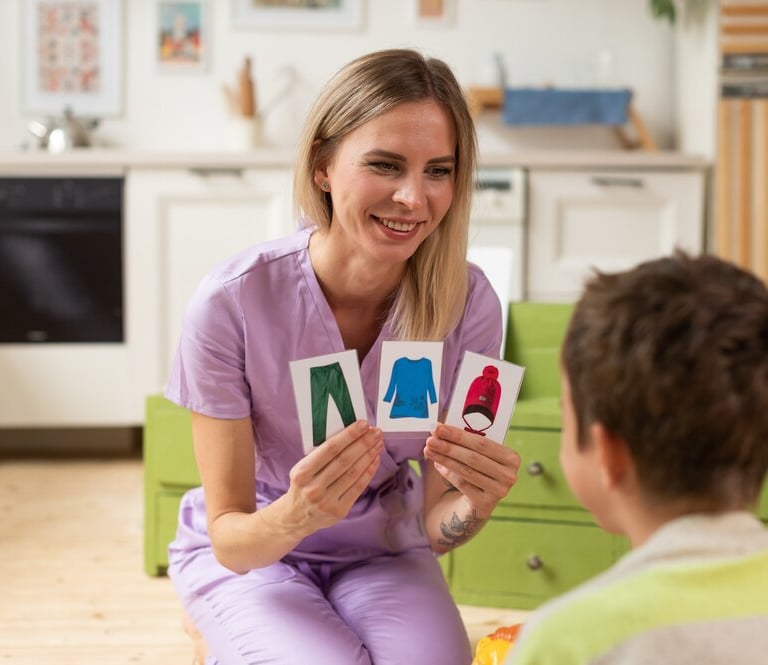

🌟
"Sometimes the things that make you different are the things that make you stand out."
— Anthony Hopkins
🧠 Academy Award-winning actor. Diagnosed with autism in adulthood.
🧩 Free Resource for Families and Professionals
We're gifting you a PDF activity kit, ideal for children with Autism Spectrum Disorder (ASD). It includes cutout cards, games to stimulate attention, coloring activities, playful dynamics, and much more.
📚 This material has been compiled from various autism communities with the goal of sharing, supporting, and enriching learning through love and inclusion.
💖 Download it for free and start enjoying it today!
📥
Are you a Professional or Do You Provide Services Related to ASD?
At MiRutaTEA, we're developing a new section where therapeutic companions, psychologists, speech therapists, psychopedagogues, specialized teachers, and other professionals can showcase their services through our app and website.
🧩 What Will You Be Able to Offer?
Therapeutic services, school support, or stimulation.
Workshops, group activities, or intervention proposals.
Links to your social media or professional website.
Contact information so families can easily find you.
💙 How to Join?
We'll soon launch a low-cost monthly subscription system so you can be part of our community. In the meantime, you can complete the contact form and tell us about your work.
🚀 Join a Network Designed to Connect Families with Professionals Committed to the Inclusion and Well-being of Individuals with ASD.
🔗 One Click Makes a Difference
Follow us on social media and help us reach more families with information about autism and alternative communication.
📲 Your support means a lot! 👇
💙 At MiRutaTea, we believe in the power of every voice.
Your experience can support, inspire, and help someone feel less alone.
🧩 Click the button and join the blog: read, share, and be part of the conversation.
This space is yours too.
